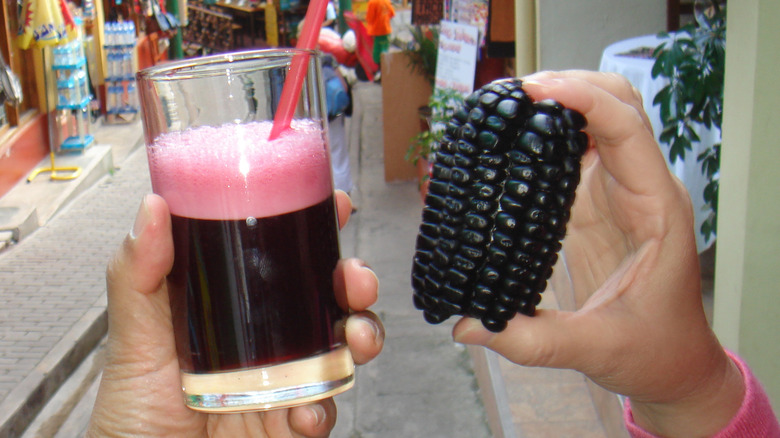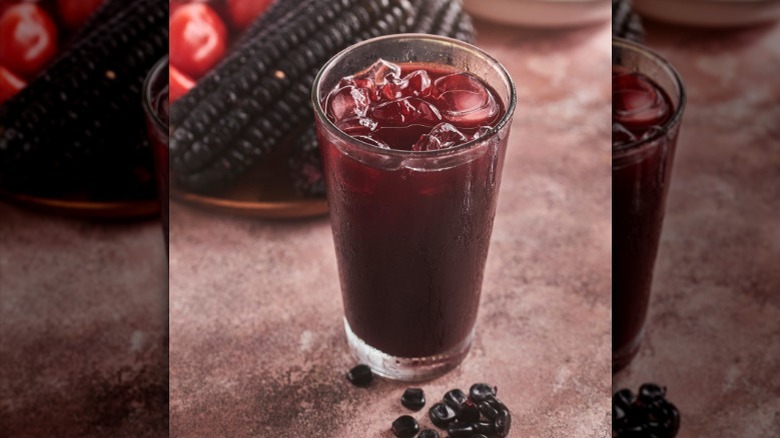The Hazy Origins Of Peru's Purple Drink, Chicha Morada
If you visit Peru and search for iconic Peruvian foods to try before you die, you may find an especially striking drink on the menu: chicha morada. This beverage sports a dark purple hue thanks to the inclusion of purple corn. The drink also usually includes pineapple, lime juice, cinnamon, cloves, and sugar. Unlike other forms of chicha served in different regions of South America, chicha morada is typically nonalcoholic. But while this is a popular way to turn corn juice into a drink in Peru, the drink's origins are a bit complicated.
According to archaeologists, chicha morada (or at least a very similar beverage) was already being made before the emergence of the Inca Empire, which reached its height shortly before Spanish conquistadors arrived in the early 16th century. Colonial writers noted that the beverage was used as a medicinal remedy, in pre-colonial religious rituals, and as an offering to the dead, all of which centered on the cultural significance of the life-giving corn crop.
Even so, no one ever bothered to explain just who created the distinct purple drink, leaving the identity of its ancient inventors a mystery even today. We can reasonably guess that, given how corn is one of those foods that's much older than you realize, chicha morada has been around for quite a long time.
How chicha morada is made and consumed today
Traditionally, chicha was made from corn that had been allowed to germinate, or sprout. Archaeological evidence suggests that early versions of chicha were likely fermented. Enzymes found in human saliva act as key fermentation agents, meaning early chicha morada brewers almost certainly chewed on their purple corn for a bit before putting it in a fermentation vessel. At some point, according to colonial chroniclers, chicha morada was made by boiling instead of fermentation.
Besides enjoying the taste, early proponents of chicha morada may have been correct about its medicinal benefits. A 2020 paper published in the Journal of Ethnic Foods found that a purple corn-based chicha known as chicha de Guiñapo may be able to help manage hyperglycemia and appears to have antioxidant properties worthy of further research.
Today, you can still find chicha morada made by boiling purple corn along with flavorings and sweeteners, but you can also procure it in pre-packaged and powdered forms. According to purists, however, these versions of chicha morada are pale imitations of the real thing, tasting more like a sickly sweet syrup than the complex, history-laden beverage they love. For the true chicha morada experience, it may be best to find a high-quality restaurant version or turn to a skilled home cook instead.

